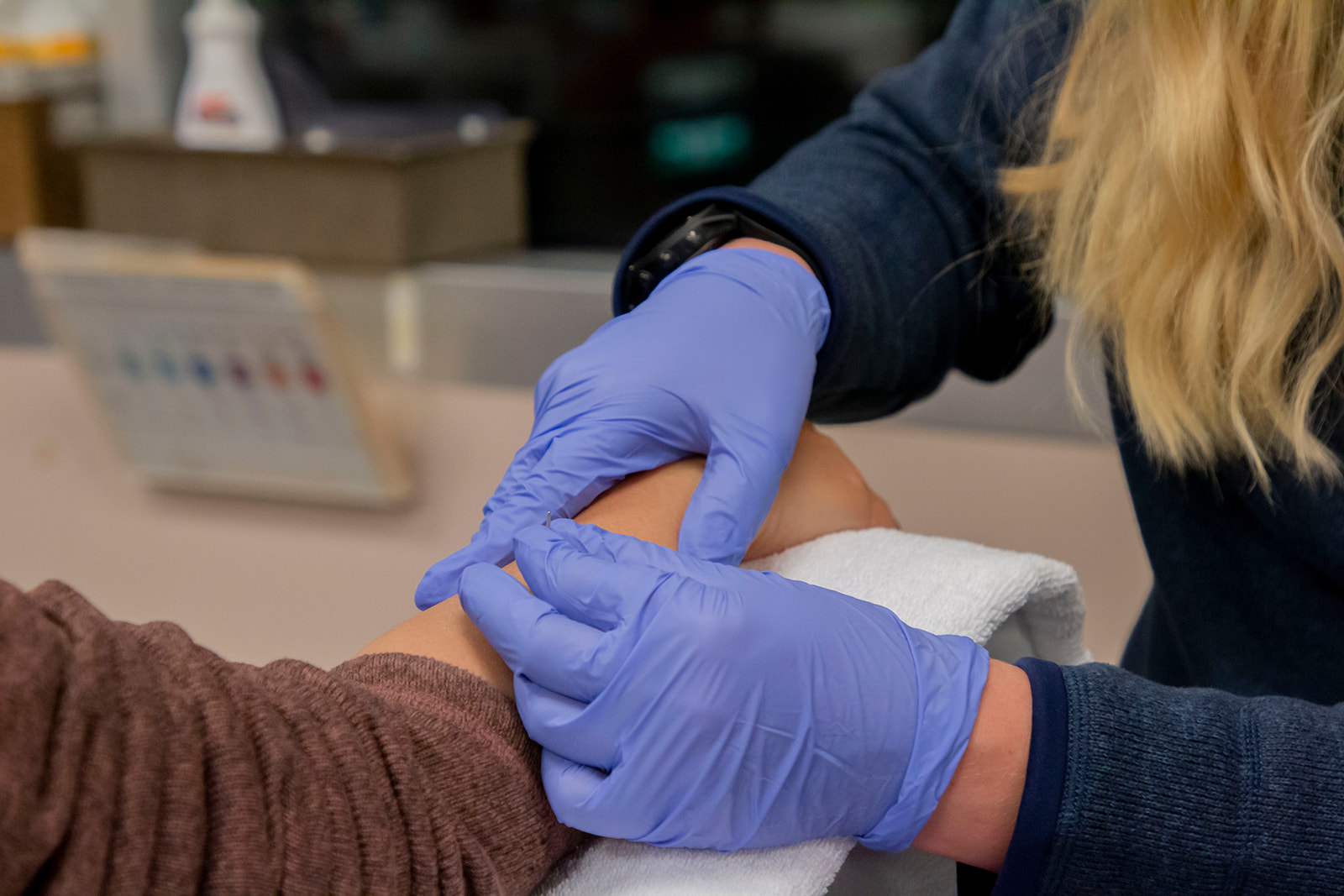Dry needling is the insertion of sterile, fine monofilament needles into muscles, ligaments, tendons, near nerves, and scar tissue. There are many conditions and diagnoses that benefit from the treatment of dry needling. For this blog post, we will be focusing on the use of dry needling to treat myofascial trigger points. Let’s first define what myofascial trigger points are and then discuss how dry needling is used to treat them.
What is a myofascial trigger point?
A myofascial trigger point is defined as a tender spot in a tight/taut band of skeletal muscle fibers that has pain in response to movement, stretch, contraction, or overloading of the tissue. They weaken the muscle and can refer pain to other areas of the body. There are two types of trigger points:
- Active myofascial trigger point: pain or spontaneous pain in response to movement, stretch or compression. Prevents full lengthening of the muscle and can cause weakness in a muscle.
- Latent myofascial trigger point: sensitive spot with pain or discomfort in response to compression only
Trigger points are very common and may be caused by injuries, poor ergonomics, working out, tight clothing, poor posture, and stress.
How dry needling helps to treat myofascial trigger points
There are many treatment interventions that have been proposed to address myofascial trigger points; dry needling being one of them. Clinical research has shown that dry needling results in positive treatment effects such as:
- Decreased pain and muscle tension
- Improved range of motion
- Muscle strength
- Coordination
These treatment effects result in reducing the number of trigger points within a muscle.
Physiological effects of dry needling
Effects on blood flow and tissue healing
Tight muscle bands and contractures in tissue cause restriction in blood supply to your muscles. When a needle is inserted into the trigger point it activates a physiological process. This process is remodeling the injured tissue around the needle site that results in improved circulation. It will also reduce inflammation and replace damaged tissue with healthy tissue. This causes the trigger point to release/deactivate.
Neurophysiological effects
Inserting a needle in a trigger point stimulates receptors within the tissue which then transmit that signal into the brain. This results in blocking or inhibiting pain signals from reaching the brain and sends a different sensation to the brain. This is known as the Gate Control Theory of Pain.
Dry needling is used as an adjunct in your treatment plan. Typically, your therapist will start with dry needling early on in your treatment and continue as needed throughout your plan of care. It is combined with strengthening exercises, stretching, and other treatment techniques that have been recommended for you by your therapist.
How will I feel after dry needling?
It is common to experience some general soreness after your dry needling treatment. This soreness will typically last 24 to 72 hours. Post needling soreness is comparable to the soreness you may experience after a workout. It is recommended to move, stretch your muscles, and perform your prescribed stretches and exercises following dry needling. Ice or heat can be used as needed. Hydration is also important for decreasing soreness in muscles. A lot of times, patients will have immediate improvement in flexibility and reduction in pain following dry needling.

Frequently asked questions about dry needling:
Who can perform dry needling?
Dry needling is performed by health professionals, such as occupational therapists, hand therapists, and physical therapists, who are certified in dry needling.
How is dry needling different from acupuncture?
Traditional acupuncture is rooted in eastern philosophy and has been around for over 2000 years. Dry needling is rooted in western medicine. Dry needling is used to treat various painful conditions of the musculoskeletal system, usually myofascial pain syndrome. It is performed by occupational therapists, physical therapists, chiropractors and other healthcare professionals who complete the required certification. Compared to dry needling, acupuncture has a broader range of indications including: gastrointestinal and neurological disorders in addition to musculoskeletal pain. Dry needling and acupuncture share similarities with respect to needling technique using solid filiform needles. Acupuncturists use needles to target acupuncture points based on a Meridian Map of the body’s systems to improve energy flow and promote healing.
If you would like to know more about how dry needling may be helpful to you, call (907) 563-8318. Our certified dry needling therapists will be able to discuss how it may reduce your pain and get you back to doing the activities you love.
Written By: Allison Horazdovsky, OTD, OTR/L, CHT – Lead Therapist
References:

